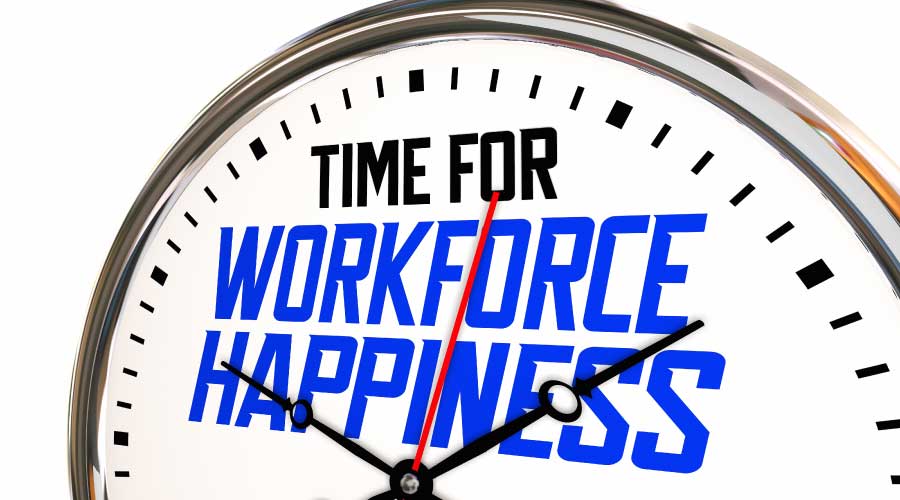Metrics and Managers: Finding and Sharing Critical Data
Managers need a strategy for communicating the value of their departments’ activities and achievements.
By Laurie Gilmer, Contributing Writer
The role of maintenance and engineering departments is fundamentally one of service – to the organization, to business priorities and most of all, to people. While that is the high-level view, day-to-day responsibilities can feel anything but that.
Managers often operate in the daily weeds, with contractors and projects to manage, budgets to maintain, phone calls and emails to answer, critical maintenance tasks to ensure are completed, and ever-present emergency and unplanned maintenance activities to address. Managers must continually balance the strategic and the tactical.
Identifying metrics
In a recent discussion with facility professionals, we asked the question, “What is the importance and place of metrics in facility management?” The conversation really got going when we talked about what to report to whom — specifically, to organizational leadership.
What I learn every time I ask that question is the way each manager, regardless of experience and education, wonders two things:
What are others doing? What if someone else has a magic bullet, that perfect metric or set of metrics that would make the team say, “Ah yes, that changes everything,” and everything would be clear?
How can I convey our department’s achievements to the C-suite? The challenge is to relate that information to the overall organization in a way that helps others see the importance of facilities.
Managers all want to achieve those goals or some version them, but I suspect most managers have figured out that no silver bullet set of metrics exists for any one facility or organization, and there is no single way to communicate value. But there is a silver bullet way to figure out which metrics are helpful and meaningful for managers to communicate to their facilities and leadership teams.
Understanding identity
Managers might be thinking of metrics they are using: the number of too-hot or too-cold calls, customer satisfaction rates, work order completion rate, percentage of work orders by type, ratio or corrective to preventive maintenance, staff training hours or facility condition index. These are common metrics, and they have a place in the process. But they are not the place to begin, nor will reporting them to the C-suite out of context be helpful.
Instead, managers should start with identity. What does the organization value, and what is its mission? Who is in the facilities, and what is critical to them?
“Keep the registers ringing,” was the mission-critical element for one retail establishment.
“Never lose the bio research freezers and refrigerators,” was the rally point for a research and development campus.
The mission-critical element for one office-work facility was to make sure employees could always get to their electronic files regardless of geographic location or facility utility interruption.
It soon becomes clear the way each of these facilities teams framed its facility strategy. They started with what is most important to the organization and its people. That step gave them focus to work through the elements of facilities that are most important and understand why. Once managers understand what is most important, the rest of the program can go forward in that context.
Spotlight on communication
The next step is to identify who needs to be communicated with. There are typically three groups of people that need specific types of information:
- Technicians. They benefit from process metrics, such as preventive maintenance compliance, ratio of preventive maintenance (PM) to corrective maintenance (CM), system downtime and the number of facility-related occupant complaints by type.
- Managers. They need to understand program or business elements, such as budget variance, productivity, environmental compliance, and safety and security compliance.
- Organizational leaders. They need to understand the way facilities are performing related to strategic outcomes, such as customer satisfaction, facility or critical system downtime, business continuity, environmental impact — carbon footprint, decarbonization, net zero, etc. — a portfolio facility condition index, and environmental, social and governmental compliance.
When it comes to monitoring and reporting metrics, what is the role of a computerized maintenance management system (CMMS), integrated work management system (IWMS) or enterprise asset management system (EAMS)? These systems can be helpful, particularly with process metrics. When they are focused on the information managers want to track and report, they can be incredibly useful in providing data about specific systems or activities, such as work order completion rates, and PM to CM ratio. Using these specific metrics, managers can fold the data into a larger story.
One other important element in understanding metrics related to the facility strategy and organizational outcomes is having an accurate inventory of the assets under facility management care.
Metrics lessons
As managers work through their plans for determining the metrics that will work best for their organizations, here are a few lessons I’ve learned:
- Get to know the organization and what makes it tick.
- Spend time determining who needs to know what. The C-suite typically has a longer-term view and needs to know about issues related to reliability, budget, investment needs and corporate goals. Technicians typically need more granular, immediate data on equipment and system performance.
- Measure only what is needed. Just because something can be measured does not mean it needs to be. Be choosey. More data and information can be an albatross and create more work without benefit.
- Measure trends over time. This process helps identify whether initiatives and activities work, allowing for adjustments to be made to help the team succeed.
- Understand the facilities systems and equipment the department is responsible for.
- Do not co-opt another facility organization’s metrics. They will not mean much to any other team.
- Do not be confined to what is present in the CMMS, IWMS or EAMS. These systems provide a great deal of capability, but to succeed, managers need to combine what is in these systems with knowledge of the organization to identify metrics that are truly meaningful at various levels of interaction.
It takes time to develop and implement an effective metrics strategy and program. It is not uncommon for managers working with the measurement, monitoring and reporting program to figure out they need more or different metrics. That realization is normal. Successful facility teams start with what they believe to be the most meaningful metrics in the context of their strategies and adjust as they need, informed by feedback from others in the organization.
Balancing the strategic and tactical is an ongoing process for managers. Understanding the role of metrics and applying them at appropriate levels raises the bar of performance for the facility organization and keeps the focus where it needs to be — on the organization’s success for the business and the people in it.
Laurie Gilmer is vice president and COO of Facility Engineering Associates. Gilmer is the chair of IFMA’s Global Board of Directors, serves as IFMA's liaison to the Building Industry Decarbonization Collaborative and serves on the national visiting committee of Building Efficiency for a Sustainable Tomorrow Center.
Related Topics:












